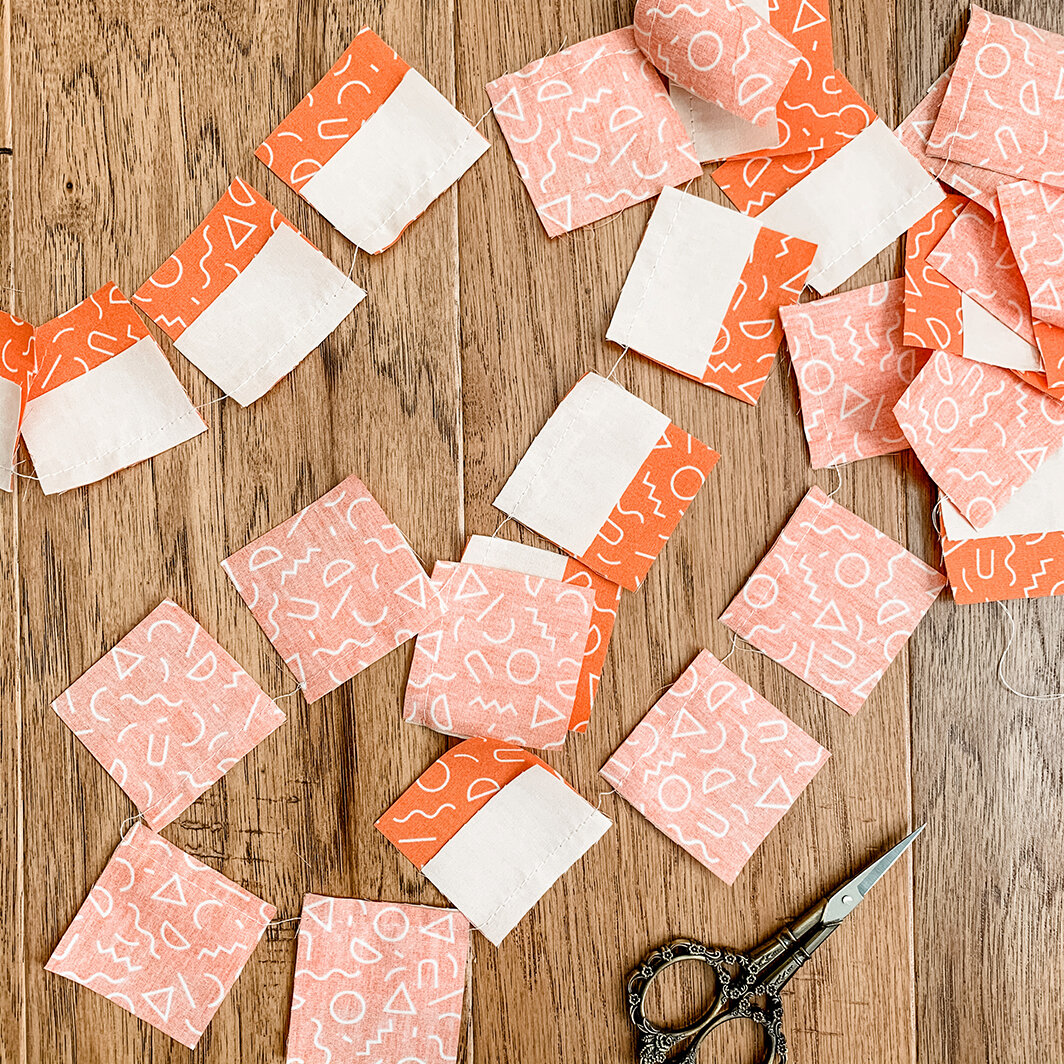Sweet Home Quilt Along - Week 4
Welcome to the fourth week of the Sweet Home Quilt along hosted by (me) Sharon Holland, Maureen Cracknell, and Jennifer Jones. It’s been fun to connect with the Sweet Home quilt makers on our Instagram community and here on our blogs. The quilts being made are so adorable—see what I mean when you search the #SweetHomeQAL hashtag on Instagram.
If you’re just joining us you’ll probably want to pop over to the Sweet Home Quilt Along - Week 1 post to get caught up. You can purchase the Sweet Home quilt pattern from my SHOP here.
If you’ve been following along since the start then you should be ready to begin sewing the Corner Squares and adding sashing to the blocks to assemble into a quilt top.
The quilt along will run six weeks total and we’ll cover a different aspect of piecing or finishing for that week. Some of you are working ahead and that’s wonderful—it’ll give you more time for the quilting and finishing portion. This quilt along is very relaxed. If you feel like completing the top in a week—go for it! But, if you’re a beginner and want more instruction along the way—we have that too in the form of LIVE and recorded Instagram tutorials over on my IGTV channel on Instagram. I’ve recorded step by step tutorials for you to access on my @sharonhollanddesigns IGTV channel on Instagram and so far the Sweet Home Quilt series covers fabric selection, Log Cabin block, and Bungalow block construction. I didn’t add any new videos this week because the Corner Squares are assembled in the same manner as previous sections of the house blocks.
Corner Squares and Sashing
The Corner Squares assemble fast and are stitched just like the Log Cabin centers and the window sections of the Bungalow blocks with two short pieces placed on opposite sides of a center square and then adding two longer pieces on the remaining sides.
I encourage you to chain piece the Corner Squares, adding one side at a time to all pieces without clipping the thread until that task is finished. If you want to wait and clip the threads once both opposite sides are attached that also works great to keep all your pieces from getting misplaced.
Once the Corner Squares are done you’re ready to start assembling the quilt top!
Pattern Typo
In the cutting instructions for the background I had you cut out X number of 14’’ long (vertical) sashing strips. This is correct and if you did that in the original cutting you’ll probably miss the typo in Assembly like I and hundreds of other have up until now.
Steps 2 and 3 in Assembly tell you to use 14-1/2’’ long vertical sashing and that’s the typo. By default I added in the 1/2’’ we normally associate with unfinished block sizes. This should read 14’’ and the strips you cut earlier will fit like a charm to your blocks that will finish out at 9’’ x 13-1/3’’ when all sewn into a top.
I’ve corrected the PDF so you may or may not have the 2.0 version. If you have the original version you may want to make a note in your PDF print out of the change for the next time you make this quilt.
When adding the sashing, I work in horizontal rows like illustrated in the patterns and press my seams toward the sashing on all rows. This will make assembly easy as the seams will nest in place as you match and pin seams in the rows.
Note to keep all your Corner Squares oriented with the small pieces running up and down and the long sides on the sides to keep a consistency of block orientation throughout the quilt.
Next week we’ll be blogging about turning your top into a quilt with batting, backing, quilting, and a binding finish.
I’m enjoying seeing your postings to Instagram and following along on your progress—you’re all are doing amazing and beautiful work on your Sweet Home quilts—there’s even some finished quilts showing up!
Don’t forget that this Friday will be a new Friday Giveaway with fabulous prizes from our sponsors. Be following along on Instagram as all the giveaways will be held on that platform and winners will be randomly drawn the following Monday from the #SweetHomeQAL hashtag pool. The quilt along members that post their progress photos to public account on Instagram and use the hashtag #SweetHomeQAL will automatically be entered into every Sweet Home Quilt Along drawing! It’s that easy to enter, so enter often to up your chances!
And, while you’re on Instagram, take a look at the #SweetHomeQAL hashtag on Instagram and see what the other QAL Makers are using in their quilts—it’s an amazing resource not only to see fabrics but to make new friends!
I am an Amazon Associate site and earn from qualifying purchases on the products I’ve linked below. The helpful products selected are the same or similar to materials used to make the project(s) in this blog post or related items I think you may enjoy.










